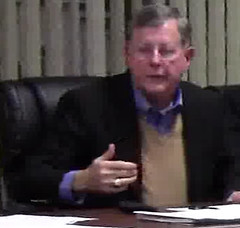 Andrea Schruijer’s
Executive Director’s Report to
the Industrial Authority 19 February 2013
had one theme: Internet broadband speed and access.
Andrea Schruijer’s
Executive Director’s Report to
the Industrial Authority 19 February 2013
had one theme: Internet broadband speed and access.
It’s a concern, especially in more rural parts of our county….
It’s up to us to make sure that we create an awareness of the importance of having that technology in our community.
Why the sudden (just started late last year) emphasis on broadband?
We’ve worked with a few of our existing industries that do not have the capacity. Operations have had to change or move to different locations that have better connectivity.
That’s a not-so-veiled reference to the the company that located in Lake Park and discovered there was no broadband, and to the two companies that moved their IT operations to Thomasville.
She emphasized again that broadband throughout the county was important:
Continue reading










